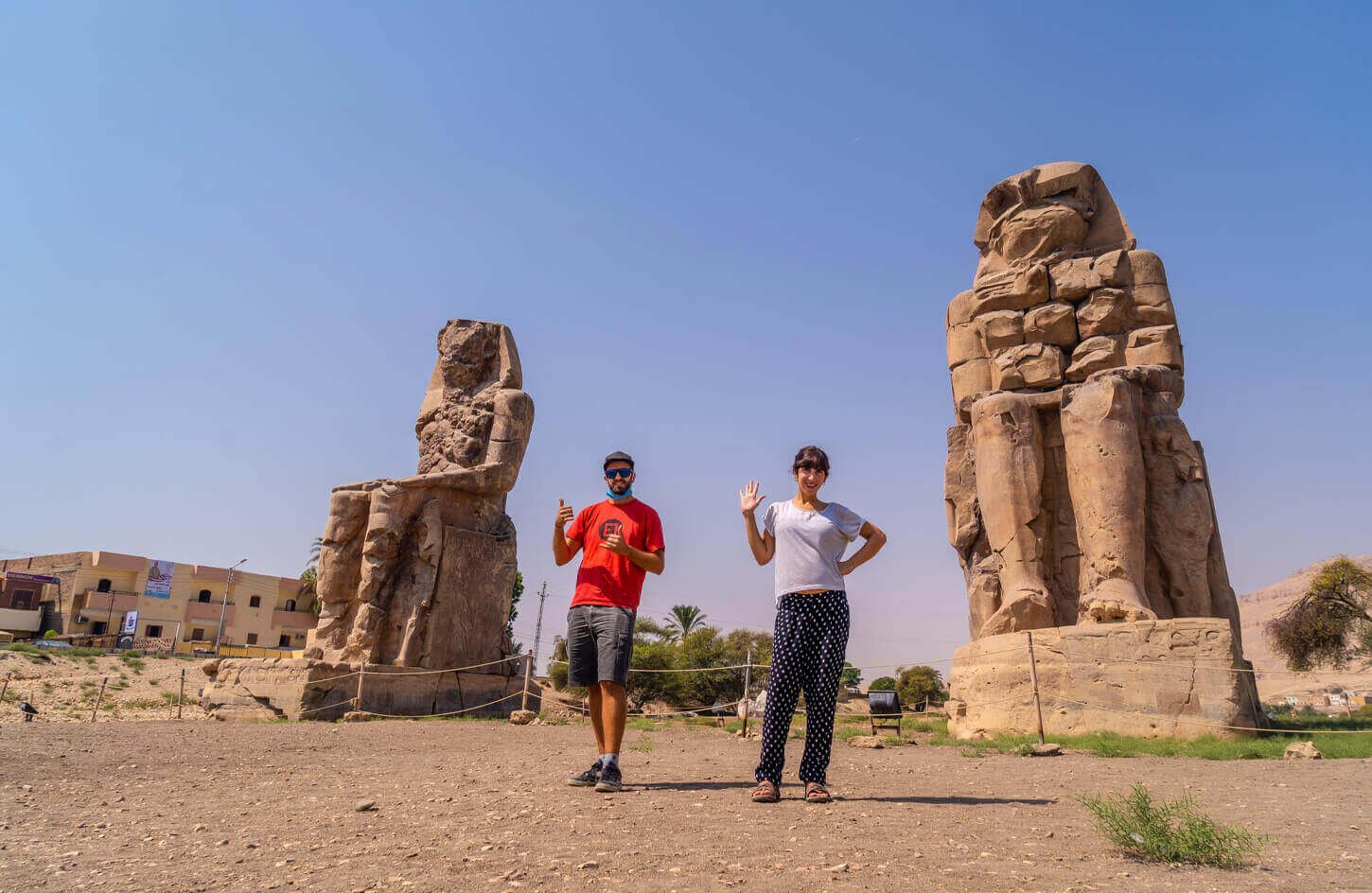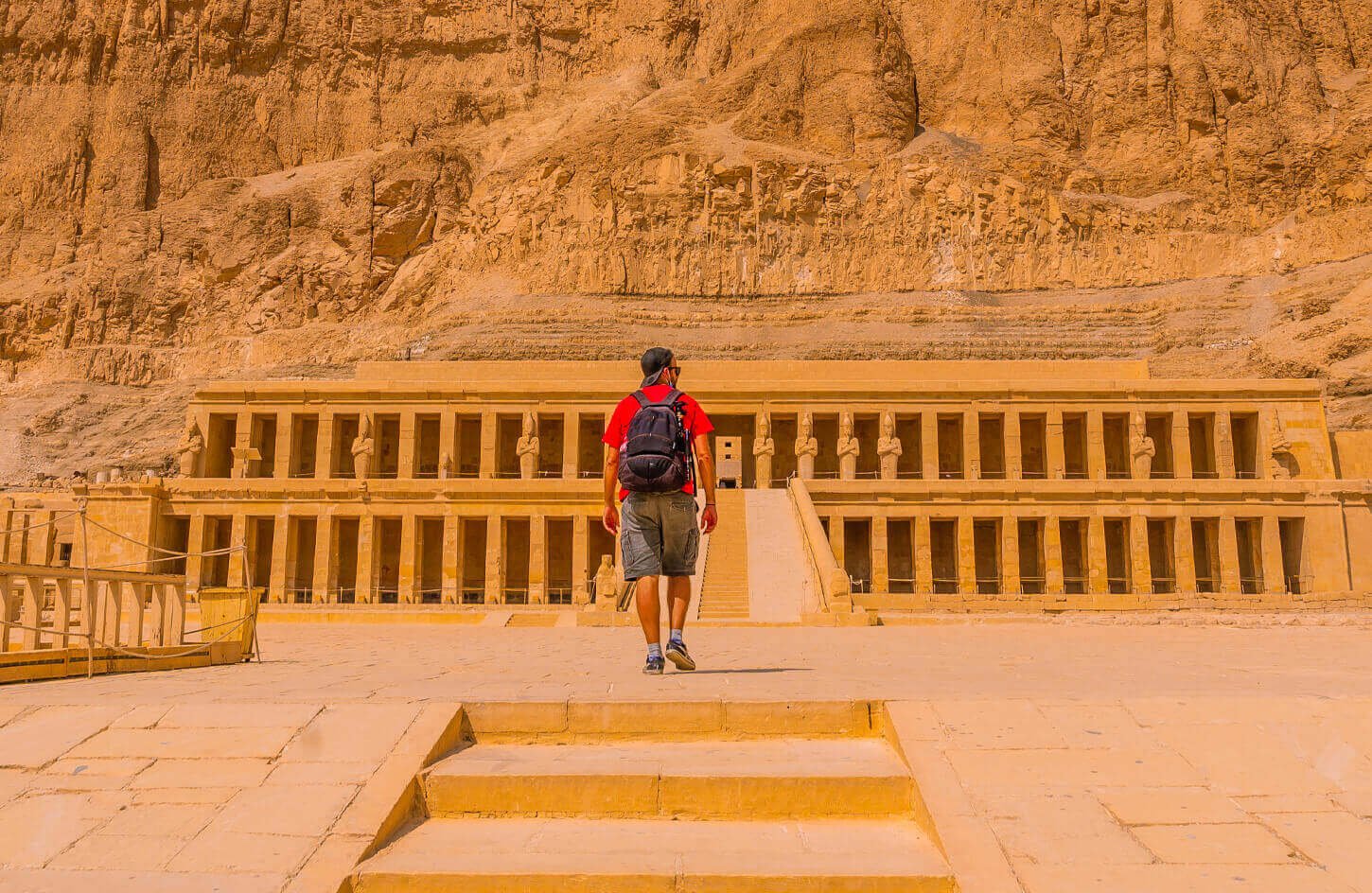Luxor City Egypt, is a destination that encapsulates the essence of ancient civilization and captivates the hearts of visitors worldwide. Situated along the banks of the majestic Nile River, Luxor boasts a rich historical heritage, making it a treasure trove of archaeological wonders and a testament to the grandeur of Ancient Egypt. With its temples, tombs, and vibrant cultural life, Luxor has become a mecca for tourists seeking to immerse themselves in the mystique and grandeur of this ancient land.
General Information about Luxor
| Category | Details |
|---|---|
| Location | Situated on the east bank of the Nile River, about 670 km south of Cairo. |
| Historical Significance | Ancient city of Thebes; capital during Egypt’s Middle and New Kingdom periods; religious and political hub of the Egyptian empire. |
| Main Attractions | East Bank: |
| – Karnak Temple Complex: Largest religious structure dedicated to Amun-Ra. | |
| – Luxor Temple: Built by Amenhotep III and Ramses II, key to the Opet Festival. | |
| West Bank: | |
| – Valley of the Kings: Necropolis with pharaohs’ tombs, including Tutankhamun’s. | |
| – Valley of the Queens: Tombs of queens and royal children, including Queen Nefertari’s. | |
| – Mortuary Temple of Hatshepsut: A terraced temple built by Queen Hatshepsut. | |
| – Colossi of Memnon: Two giant statues of Amenhotep III. | |
| Culture and Lifestyle | Blend of modern life and ancient traditions; bustling markets, Nile felucca rides, and warm hospitality. |
| Climate | Hot desert climate with extremely hot summers and mild winters. Best visited from October to April. |
| Transportation | – Luxor International Airport for domestic and international flights. |
| – Trains and buses connect Luxor to cities like Cairo and Aswan. | |
| – Local transport includes taxis, horse-drawn carriages, and motorboats across the Nile. | |
| Why Visit Luxor? | Walk in the footsteps of pharaohs, explore iconic archaeological sites, and immerse yourself in Egyptian culture. Perfect for history enthusiasts, adventurers, and cultural travelers. |
Historical Background
In antiquity, Luxor city Egypt was known as Thebes, a name that resonates with grandeur and power. Thebes was the religious and political capital of Egypt, dedicated to the worship of Amun-Ra, the king of the gods. The city stood as a symbol of the pharaoh’s divine authority and was believed to be the gateway between the mortal world and the realm of the gods.
| Aspect | Details |
|---|---|
| Ancient Name | Known as Thebes in ancient times, referred to as “Waset” in the ancient Egyptian language. |
| Role in Ancient Egypt | Served as the religious and political capital during the Middle Kingdom (c. 2055–1650 BCE) and the New Kingdom (c. 1550–1070 BCE). |
| Religious Importance | The city was home to the Temple of Karnak, dedicated to the god Amun-Ra, and was the center of worship for the Theban Triad: Amun, Mut (his wife), and Khonsu (their son). |
| Pharaohs Associated | Key rulers associated with Luxor include: |
| – Amenhotep III: Builder of the Luxor Temple and parts of Karnak. | |
| – Hatshepsut: Built the iconic Mortuary Temple at Deir el-Bahari. | |
| – Ramses II: Expanded the Luxor Temple and left his mark with colossal statues and obelisks. | |
| – Tutankhamun: Famous for his tomb in the Valley of the Kings. | |
| Architectural Legacy | Luxor is known for its grand temples, elaborate tombs, and intricate artwork that reflect the religious, cultural, and political significance of ancient Egypt. |
| The Valley of the Kings | This royal necropolis was established during the New Kingdom as a hidden burial site for pharaohs to protect their tombs from looters. |
| The Decline of Thebes | After the New Kingdom, Thebes lost its prominence as the capital moved northward, but its religious significance persisted. |
| Modern Rediscovery | Luxor’s ancient sites were rediscovered by European explorers in the 18th and 19th centuries, sparking global interest in Egyptology and archaeology. |
| Cultural Heritage | Luxor remains a UNESCO World Heritage Site and continues to be a symbol of ancient Egyptian grandeur, attracting historians, archaeologists, and travelers from around the world. |
Tourism in Luxor City Egypt
Luxor City Egypt is a dream destination for history enthusiasts, archaeology buffs, and those seeking a deep connection with the past. Its unparalleled collection of temples, tombs, and monuments, coupled with the warm hospitality of the locals, creates an enchanting experience for visitors. Luxor offers a unique opportunity to explore ancient wonders while immersing oneself in the vibrant cultural fabric of Egypt.
-
Karnak Temple Complex: The Karnak Temple Complex stands as the largest religious site in Egypt and one of the most impressive temple complexes in the world. It spans over 100 hectares and took centuries to complete. Karnak is a vast ensemble of sanctuaries, pylons, obelisks, and halls dedicated to various gods, with the Great Hypostyle Hall being a true architectural marvel.
-
Luxor Temple: Situated on the east bank of the Nile, Luxor Temple is a testament to the grandeur of Ancient Egyptian architecture. Dedicated to the Theban Triad, consisting of Amun, Mut, and Khonsu, the temple features colossal statues, stunning reliefs, and an imposing entrance adorned with the iconic Avenue of Sphinxes.
-
The Valley of the Kings: Located on the west bank of the Nile, it served as the burial ground for pharaohs and nobles during the New Kingdom. This necropolis is home to over 60 tombs, including the famous tomb of Tutankhamun. Visitors can explore the intricately decorated chambers and marvel at the exquisite funerary art.
-
Valley of the Queens: Adjacent to the Valley of the Kings, the Valley of the Queens is the final resting place of the queens, princes, and high-ranking officials of Ancient Egypt. This serene valley showcases beautifully decorated tombs, such as the tomb of Queen Nefertari, renowned for its vibrant wall paintings.
-
Mortuary Temple of Hatshepsut: Rising dramatically from the desert cliffs, the Mortuary Temple of Hatshepsut is a masterpiece of ancient architecture. This temple was dedicated to the female pharaoh Hatshepsut and blended harmoniously with the natural landscape. Its terraces, colonnades, and intricate reliefs tell the story of a powerful and visionary ruler.
-
Colossi of Memnon: Guarding the entrance to the Theban Necropolis, the Colossi of Memnon are two imposing statues of the pharaoh Amenhotep III. These colossal statues once stood before a vast mortuary temple but are now the remnants of a bygone era, inspiring awe with their sheer size and timeless presence.
-
Nile River Cruises and Felucca Rides: A journey along the Nile River is necessary when visiting Luxor City. Nile River cruises offer a tranquil and picturesque way to explore the region, with opportunities to visit temples, enjoy scenic views, and experience the rhythmic flow of life along the river. For a more authentic and traditional experience, felucca rides provide a glimpse into the traditional mode of transportation that has been used for centuries.

Modern Luxor
| Aspect | Details |
|---|---|
| Current Status | Luxor is a modern city that thrives as a major tourist destination and cultural hub. It is often referred to as the “world’s greatest open-air museum.” |
| Population | Approximately 1.5 million people, with many working in tourism, agriculture, and local crafts. |
| Economy | Primarily driven by tourism, with visitors flocking to explore its ancient temples, tombs, and monuments. Secondary sectors include agriculture and trade. |
| Urban Development | Luxor has modern infrastructure, including hotels, restaurants, shopping centers, and an international airport to accommodate its global visitors. |
| Tourism Industry | Luxor attracts millions of tourists annually, offering guided tours, Nile cruises, hot air balloon rides, and cultural experiences. |
| Cultural Life | The city hosts cultural festivals, local markets, and showcases traditional Egyptian crafts, music, and cuisine. |
| Landmarks in the City | – Luxor Museum: Displays artifacts from the New Kingdom and other periods. |
| – Mummification Museum: Offers insights into the ancient Egyptian mummification process. | |
| – Corniche: A scenic promenade along the Nile River. | |
| Modern Attractions | – Hot Air Balloon Rides: Offering panoramic views of Luxor’s ancient sites at sunrise. |
| – Nile Cruises: Starting or ending in Luxor, connecting to Aswan and showcasing the beauty of the Nile Valley. | |
| Transportation | – Luxor International Airport: Handles domestic and international flights. |
| – Railway Station: Connects Luxor to major cities like Cairo and Aswan. | |
| – Feluccas and Motorboats: Commonly used for crossing the Nile and enjoying river tours. | |
| – Taxis and Horse-Drawn Carriages: Used for navigating within the city. | |
| Climate | Luxor has a hot desert climate, with scorching summers and mild winters. Peak tourist season is between October and April. |
| Challenges | Balancing modernization with preserving its cultural heritage and managing mass tourism’s environmental impact. |



0 Comment